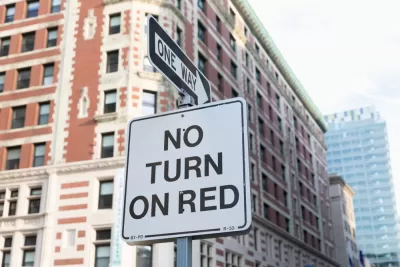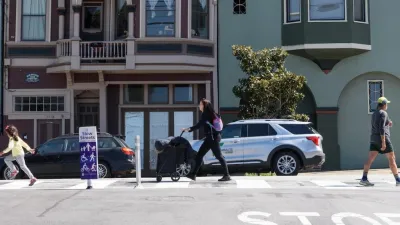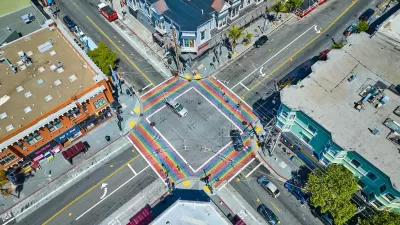The policy is common in many countries, New York City, and other dense urban areas with high numbers of pedestrians and cyclists.

According to an article in Streetsblog San Francisco by Roger Rudick, the San Francisco Board of Supervisors unanimously passed a resolution that moves to ban right turns on red in the city. “According to the MTA, turn-on-red crashes account for 20% of pedestrian- or bicycle-related injury crashes involving drivers turning at signal-based intersections.”
Supervisor Preston, author of the bill, said “This is another important step toward reducing traffic collisions and making our streets safer for pedestrians and cyclists.”
Right turns on red are shown to pose more danger to pedestrians and cyclists, leading to more car-pedestrian (or bike) collisions. According to advocate Luke Bornheimer, “The resolution simply calls for SFMTA to prepare a plan for a citywide policy, and SFMTA’s own evaluation showed that 92% of drivers complied with NTOR, close calls decreased by 80%, and drivers blocking crosswalks decreased 72% after SFMTA implemented NTOR at 50 intersections in the Tenderloin in 2021.”
Bornheimer adds, “No Turn On Red increases safety, access, and comfort for people, and drivers overwhelmingly comply even with traffic enforcement at historic lows,” calling it an “easy win” for street safety.
Right turns on red are banned in many countries with successful Vision Zero policies, as well as New York City.
FULL STORY: Supes Pass No Right on Red

Planetizen Federal Action Tracker
A weekly monitor of how Trump’s orders and actions are impacting planners and planning in America.

San Francisco's School District Spent $105M To Build Affordable Housing for Teachers — And That's Just the Beginning
SFUSD joins a growing list of school districts using their land holdings to address housing affordability challenges faced by their own employees.

The Tiny, Adorable $7,000 Car Turning Japan Onto EVs
The single seat Mibot charges from a regular plug as quickly as an iPad, and is about half the price of an average EV.

Seattle's Plan for Adopting Driverless Cars
Equity, safety, accessibility and affordability are front of mind as the city prepares for robotaxis and other autonomous vehicles.

As Trump Phases Out FEMA, Is It Time to Flee the Floodplains?
With less federal funding available for disaster relief efforts, the need to relocate at-risk communities is more urgent than ever.

With Protected Lanes, 460% More People Commute by Bike
For those needing more ammo, more data proving what we already knew is here.
Urban Design for Planners 1: Software Tools
This six-course series explores essential urban design concepts using open source software and equips planners with the tools they need to participate fully in the urban design process.
Planning for Universal Design
Learn the tools for implementing Universal Design in planning regulations.
Smith Gee Studio
City of Charlotte
City of Camden Redevelopment Agency
City of Astoria
Transportation Research & Education Center (TREC) at Portland State University
US High Speed Rail Association
City of Camden Redevelopment Agency
Municipality of Princeton (NJ)





























